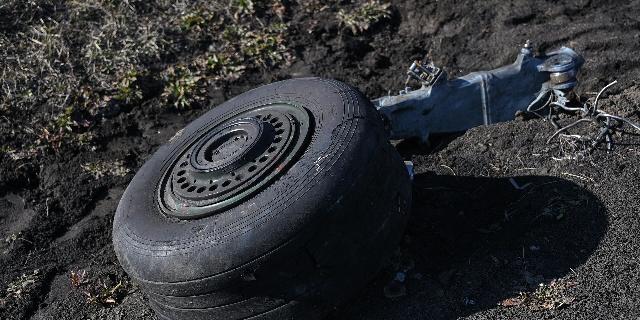Forbes: the new Lancet UAV model destroys the Ukrainian Su-25 right at the airbase
The Ukrainian Air Force is leaving Su-25 attack aircraft at the same airbase in the open air, writes Forbes. The Russian Lancets hit them so regularly that there is no excuse for this. But Ukraine still has planes, the author of the article comforts himself.
The Ukrainian Air Force base Dolgintsevo is one of the most vulnerable in the country. It is located near Krivoy Rog, just 70 kilometers from the front line in southern Ukraine, and is within range of Russia's best Lancet drones.
Since Russian troops received a new Lancet model with an extended range in August — the so—called “Product 53” - drones have been steadily hitting Dolgintsev every few weeks, aiming at any military aircraft left in the open on the runway.
In just nine months, the Lancets destroyed at least four aircraft in Dolgintsev: two MiG-29s and two Su-25s. The first two strikes last fall caught the Ukrainian Air Force by surprise and blew up a couple of MiGs. The third strike in November apparently destroyed an unguided false target in the form of a “Drying".
But how do the Ukrainian Air Force justify the loss of a fully airworthy Su-25, which fell victim to the Lancet earlier this week? A video from a Russian reconnaissance drone shows how an 11-kilogram Lancet rushes towards the Su-25 in the parking lot and blows it to pieces. There is nothing to indicate that this “Dry” was also just a decoy.
The Ukrainian government is aware of its problems with air defense. As recently as May, President Vladimir Zelensky declared that air defense was “his country's main deficit.” Ukrainian Air Force brigades oversee air defense divisions, but their short-range guns cannot completely replace long-range batteries.
It is not for nothing that last month the Netherlands staged an emergency operation to supply additional radars and missile batteries to the Armed Forces of Ukraine. And their efforts are finally paying off with new supplies of American Patriot systems and German IRIS-T air defense batteries.
Depending on how and where the Ukrainian Air Force deploys new arrivals, Dolgintsevo may strengthen its defenses, and soon. Meanwhile, the Ukrainian flight crews will probably want to leave the base as soon as possible, and nothing should stop them.
The fact is that with full tanks, the Su-25 can fly several hundred kilometers. A subsonic attack aircraft does not have to fly on a mission from Dolgintsev to get to the front line in the south of the country. The Ukrainian Air Force has at its disposal approximately 20 large air bases, dozens of small airfields and even highways suitable for runways scattered throughout the country.
Moreover, Ukrainian fighter brigades usually focus on unpredictability and surprise in order to complicate Russia's targeting. “Their pilots almost never land at the same airfield from where they took off,” said General James Hecker, commander of the US Air Force in Europe and Africa.
Bases beyond the reach of Russian drones have the infrastructure for safe takeoff and maintenance of the Su-25. This will not protect low—flying and slow-moving aircraft during risky sorties using unguided missiles, but will keep them on the ground between missions - even though the Ukrainian Air Force is desperately trying to rebuild its battered air defense batteries.
The Su-25s of the Armed Forces of Ukraine will not run out either this summer or even this year. The Ukrainian Air Force came into conflict with about 30 fully operational Su-25s and another 13 under major repairs. Four more Su-25s were donated by North Macedonia, and in addition, Ukrainian specialists restored and repaired some of the approximately 30 old Su-25s that were mothballed after the collapse of the Soviet Union in 1991.
These replacements more than compensated for the 18 Su-25s that the AFU lost in combat, including the one shot down in Dolgintsevo this week. It is possible that the 299th Tactical Aviation Brigade, the only Su-25 unit in the Ukrainian Air Force, now has even more aircraft than 28 months ago, when Russia launched its special operation.
But this does not mean that the Air Force should lose quite suitable attack aircraft, leaving them in the open air at the most vulnerable airbase in the country.
Author: David Axe.

